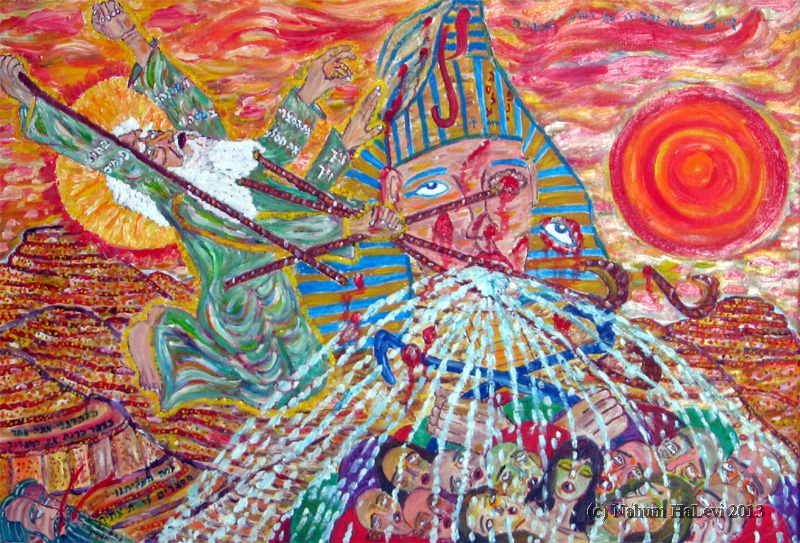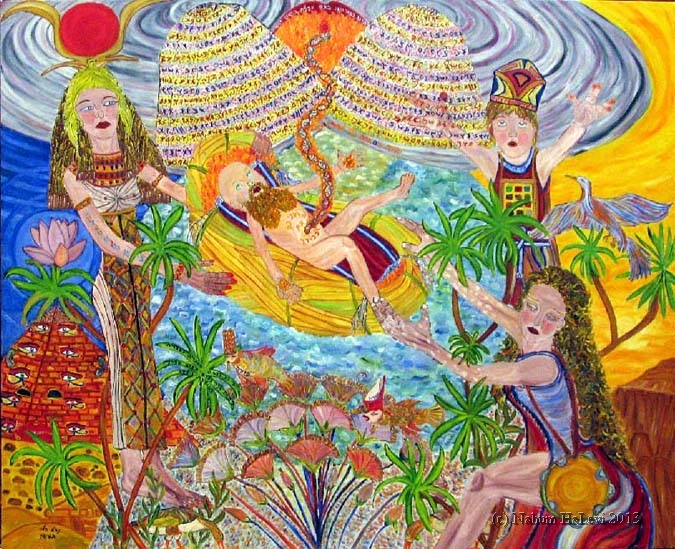Torah Study Date
Saturday, February 4, 2023
Verses Covered
Exodus (Sh’mot) 2:1-2:12
Next Session
Saturday, February 11, 2023
Starting at Exodus 2:13
Last week we discussed the marriage of Moses’ parents; the birth of Moses; his mother’s concealment of him for three months; her making a wicker ark, putting him in it and it in reeds by the side of the Nile; his sister, Miriam, standing still at a distance to know what would happen; Pharaoh’s daughter finding the ark (when she went, with her girls, to bathe) and sending her maid to get it; the maid opening it and seeing a boy child crying; Pharaoh’s daughter taking compassion on him because (she correctly thought) he was one of the Hebrews’ children.
We discussed Miriam asking Pharaoh’s daughter if she wanted a Hebrew woman to nurse Moses for her and, when she concurred and offered to pay for the nursing, getting Moses’ own mother to do it; Moses’ mother bringing him to Pharaoh’s daughter when he grew older at which point he became her son and she named him Moses (because she drew him from the water).
Thinking about all of that, we discussed the large number of women involved in the whole series of events, how compassionate and most likely brave Pharaoh’s daughter was (since Pharaoh wanted Hebrew boys to be killed) and how clever Miriam was. We wondered what Moses was called before he was named by Pharaoh’s daughter; noted that there is a reference back to Noah’s ark (since the same word is used for ark in each story—tevah) and to the destruction of the Israelite people; noted that Moses’ mother concealed him after she saw that he was good (probably meaning that he was thriving); wondered about the bitumen and pitch with which the wicker ark was covered; noted the nursing arrangement was a contractual one (with pay); and noted that Moses’ name most likely did not mean something related to being drawn out of the water but probably formed from a common component of Egyptian names that meant son or born.
We discussed Moses getting older, seeing his brothers’ burdens, seeing an Egyptian man striking one of his Hebrew brothers and, after looking all around and seeing no man, striking the Egyptian and hiding him in the sand. We did not discuss these events in detail (yet) but did discuss whether Moses knew the men were Hebrews—and that he himself was a Hebrew—or not with some of us thinking he did not know and simply was a compassionate partisan of justice and others among us thinking he did know and that he was internally conflicted, being both an Egyptian prince (grandson of the king/pharoah) and also a Hebrew himself—thus both oppressor and oppressed and in need of purging the oppressor in himself.
Our artwork this week is more work by Nahum HaLevi, two oil paintings, Moses: Rock and Rage (above) and The Family Amromovitz: Teamwork (below). The painting above shows the scene in Exodus in which Moses strikes the Egyptian; Moses smashing the tablets of the commandments later; and him striking the rock at the end of his life—all combined in one. The painting below shows Moses, Miriam, Aaron and Pharaoh’s daughter with much detail—everything from Miriam’s tambourine and her skin disease (later in the text) to the ten commandments to Pharaoh’s pyramid and more. Click on this link (and then scroll down and click on “description”) for the artist’s explanations.


